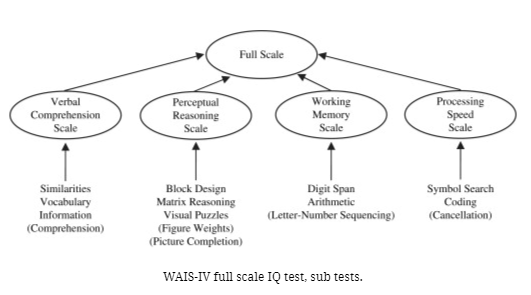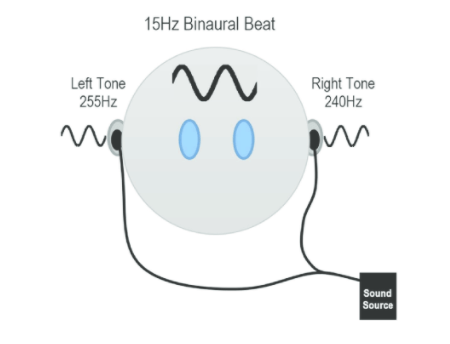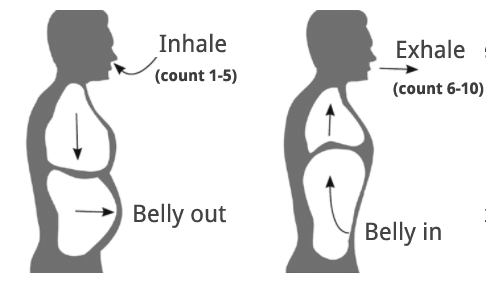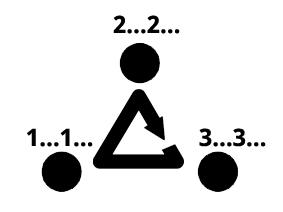[vc_row][vc_column][vc_column_text]This post provides you with a tutorial for a 10 minute exercise using your Beta (15 Hz) binaural brainwave entrainment to help with focus and train your working memory – a key component of IQ. No apps are needed for this exercise, and it’s so effective I personally use it every morning after waking.
Background Science
The IQ bottleneck: Working memory (WM)
I’m going to assume you know about the idea of short-term memory. Unlike long-term memory, your short term memory loses information quickly through the decay of memory traces, unless you actively keep attending to it.
You use your short-term memory for:
- Remembering a set of directions someone gives you
- Remember a security code that you have been sent by text to log onto an account
- Keep a telephone number in mind before you have learned it
As you will know, this memory system is strictly capacity limited – typically to 7 plus or minus 2 items of information.
But more important than just holding short term information in mind is being able to process that information to think something through, figure something out, to comprehend text you are reading, or make a decision. The more complex system that allows us to do all this is working memory – which can be thought of as your ‘mental workspace’. You use your working memory in your daily lives to perform all complex, and IQ-demanding tasks. Like the short term memory it depends on, it is a kind of bottleneck – limited in capacity.
People differ in the capacity or ‘bandwidth’ of their working memory. Differences in working memory capacity strongly predict IQ levels. Differences in working memory capacity (WMC) strongly predict IQ levels. Working memory capacity is measured as a subtest of full-scale IQ tests such as the WAIS-IV and WISC-V.

Reflection Point

Try to identify situations where you experience a working memory ‘bottleneck’ – a capacity limit – in the amount of information you could process in your thinking – your mental workspace. Can you think of a time recently where this was a problem – e.g. in having a debate, in keeping track of what you need to do, in following instructions?
Mind Wandering & Distractability
William James (1890), a founder of the field of psychology, wrote:
“the faculty of voluntarily bringing back a wandering attention over and over again is the very root of judgment, character, and will. … An education which should improve this faculty would be the education par excellence.”
Mind wandering (task-unrelated-thought and having difficulty staying ‘in the moment’) occurs 30–50% of daily life and is linked with lower task performance and worse mood (1).
Reflection Point
Try to identify when you are working on a task and your mind starts to wander, with daydreams, distracting thoughts or ruminations, preventing you performing as well as you can on the task (and maybe affecting your mood).
Exercise Instructions
- Find a place free from distraction, sit comfortably, use your earphones, and start playing your 10 minute beta wave audio file. For brainwave entrainment to work, you need to listen to this file in stereo. There is replicated evidence that beta wave audio entrainment of the type shown below and built into your audio file significantly increases your working memory capacity for both verbal information (as you might need for remembering words or digits) and visuospatial information (as you might need for doing math problems) – after just 5 minutes of use (2, 3)

- Start regular diaphragmatic breathing – mentally counting 1-5 (about 1 second per count) on the in-breath and 6-10 on the outbreath, then start back at 1-5 for another in-breath, and so on.

- This is a breath counting exercise. After you complete your first in-out breath cycle count ‘1’. Then after your second in-out breath cycle count 2. And so on to 10, and then start again at 1. If you lose count, start again at 1. You want to aim to keep track and make no errors in this exercise. There is strong evidence that this kind of breath counting exercise helps with the problem of unwanted mind-wandering (4).
. - Keeping track of two cycles of numbers – one cycle that is continuous as you regulate your in and out breath, and the other cycle that you hold ‘in the background’ as you count your breaths – is also exercising your working memory. You can make your exercise more working-memory intensive by visualising tracing out locations on lines in your mind’s eye as you count your breaths – with a different spatial location for each number you count after a full breath cycle. Your goal here is to complete the line and then start the number counting from 1 again.
.
Here is an example of an imaginary line, but you could also imagine the line extending on the vertical axis. In your mind’s eye, after one in-out breath cycle you mentally count 1 at an imaginary left-most location in your mind’s eye. After the next breath cycle you count 2, visualising a location further to the right along the number line, and so on with each breath cycle until you reach 10. Then start again from the beginning of the number line at 1 again. If you lose track along the way, start again at 1. Well done if you can succeed in this! You could expect to trace out around 6 of these number lines as you complete the 10 minute beta audio. .
. - You could extend this idea to other configurations and shapes. Here is an example for an imaginary 3-point triangle. In this example, your goal is to complete triangles, and after tracing out the triangle points with 3 breath cycles, you would start again – as shown in the figure.
 You could choose any configuration you wanted to keep track of for this exercise.Traditional ‘complex span’ working memory tests have a logic that is very similar to this exercise, testing your ability to hold ‘background’ information in mind in different locations while simultaneously actively processing information in a secondary task. Ability on this kind of test predicts fluid intelligence (IQ) scores. (5)
You could choose any configuration you wanted to keep track of for this exercise.Traditional ‘complex span’ working memory tests have a logic that is very similar to this exercise, testing your ability to hold ‘background’ information in mind in different locations while simultaneously actively processing information in a secondary task. Ability on this kind of test predicts fluid intelligence (IQ) scores. (5) - The beta wave audio file is 10 minutes long. You can do this focused (‘mindfulness’) working memory task for the duration of the audio. Try this practice for a minimum of 5 days a week, over the course of 4 weeks. I personally have made this an almost daily practice now.
Training transfer benefits
Training transfer is the name for the ‘carry over’ effects of a training exercise to other tasks, such as you may do on a day to day basis. Based on the evidence, the training is expected to help with any of the following:
- Short term memory for passwords, telephone numbers, directions, etc.
- Mindwandering when you need to focus (and associated improved mood, by being more absorbed in the task).
- The ability to hold a background plan or strategy in mind, while working through relevant tasks, step by step as you put the plan or strategy into practice.
- The ability to multi-task, holding two streams of relevant information in mind.
Try to be meta-aware of when you are next being challenged by any of these kinds of cognitive demands, and make a link between the skills you are training with this exercise and the skills you need for those tasks.
For objective test measures – you will see improvements in the number of errors you make when breath counting improve. Breath counting accuracy is a valid measure of sustained focus on being ‘in the moment’ (6). You should also see improvements on any online test of short term or working memory – such as the two tests for digits and spatial locations found at this site.
Evidence: Published research
The research articles supporting this training method are found below with screenshots from the papers’ Abstracts. All articles are from high quality peer-reviewed databases such as the Web of Science.



Evidence: Quality
Based on replications of experiments in high quality journals the quality of this evidence is rated HIGH.

Feedback
After trying these exercises, please get in touch with me by email to let me know whether they have been useful, or if you have any experiences to share.
[/vc_column_text][themestek-btn title=”Click for evidence-based IQ insight & method” link=”url:https%3A%2F%2Fiqmindware.aweb.page%2Fp%2F40f6911d-5f2e-4aab-8792-5660e5e4926e|target:_blank”][/vc_column][/vc_row]